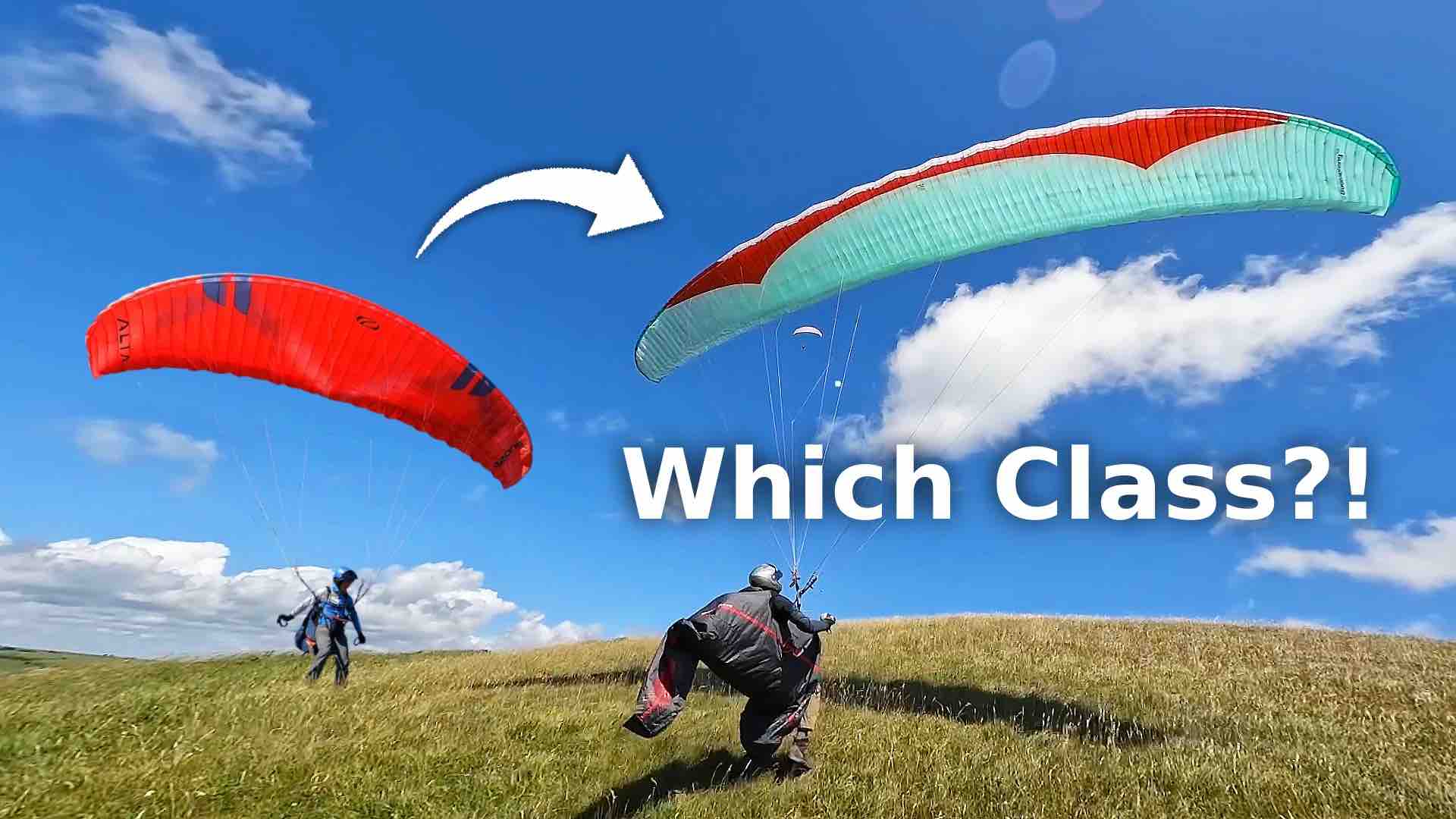
We think you should have a wide choice of the best gear, so we offer many wings from the top brands. We fly as many of them as often and much we can so we can better advise our customers on which is the right and best wing for them, individually. This gives us a unique opportunity to compare many wings side by side. It also means we can compare how the classes differ, using the latest designs from some top manufacturers. As certification tests change and technology progresses, the character of the wings in each class can evolve. In this article we offer an analysis of the handling differences, and some guidance on how to choose the right class.
Paraglider class divisions
Pilots have different expectations of what the wing categories mean and blindly following the EN ratings can lead to some surprises. We find it useful to define the classes as follows:
First Paragliders
First wings are designed to be accessible for all first time pilots. Bomb-proof handling with often surprisingly good performance. These wings are forgiving, stable, and suitable for early training.. They typically achieve an EN A rating.
Progression Paragliders
Progression wings are designed to be your first upgrade, or for talented students upon licencing (in a mellow flying environment). It's a clear step up from what you can train on, but reassuring and easy to fly with lots of passive safety. Usually get an EN B rating.
XC Paragliders
XC wings focus on handling, security and flying enjoyment. They usually have an EN B rating but are the 'high-B' wings with sharper turns and require some active piloting to keep control. Collapse recovery is low-energy but expect more sporty handling and performance. These are never a first wing; not for new pilots.
Sports Paragliders
Sports wings give you freedom of movement. It's probably where true performance is found for most experienced pilots, this is a sweet spot where handling is still great for thermaling, the wings are resilient in really bad turbulence and glides on half-bar are almost as good as anything in the sky. Usually rated EN C but could include the hottest EN Bs.
Advanced Paragliders
Advanced wings are focused on XC racing, maximising repeated long glides at speed with the lowest drag possible. For advanced pilots only, these wings with very high aspect ratio and high wing loading are usually challenging to launch, with narrow tips that bring a real risk of cravats during collapses. They demand constant attention and must be flown actively and intelligently. Usually rated EN D but might include a hot EN C.
Competition Paragliders (CCC)
Competition wings is what you buy when you are regularly coming into goal in international competitions and you now want to win. The new CCC wings and the old high-end two-lined EN Ds like the Icepeak 6 would go in here.
Paraglider sub classes
Within each class there can still be a few levels of wings, or wings with unique characteristics that make them unsuitable for particular pilots or environments, so get professional advice before buying anything!
For instance, we've categorised the wings section of our website and split them into levels to try and help you choose wings best suited to you.
Paragliders on paper
For example, a pilot with a 90 kg all-up-flying-weight might have the following choices (some may not be wise!):
|
Class |
First |
Progression |
XC |
Sports |
Performance |
Competition |
|
Weight range |
80-105 kg |
70-95 kg |
75-100 kg |
75-95 kg |
80-95 kg |
85-95 kg |
|
Flat area |
26.5 m² |
25.5 m² |
26.0 m² |
24.5 m² |
22.9 m² |
20.3 m² |
|
Aspect ratio |
4.8 |
5.2 |
5.5 |
6.1 |
7.0 |
7.6 |
|
Proj. span |
8.9 m |
9.1 m |
9.2 m |
9.7 m |
10.2 m |
9.7 m |
|
Line length |
6.5 m |
6.75 m |
7.5 m |
7.5 m |
7.5 m |
7.7 m |
|
Cells # |
41 |
45 |
59 |
63 |
65 |
101 |
First paragliders
First paragliders are designed to be forgiving and stable, making them ideal for student training and early flights after licensing. These wings balance ease of use with enough performance to support a pilot's initial development.
A key feature of these wings is their camber— the curvature of the leading edge and the depth of the cells—which significantly affects their character. Greater curvature generates more lift at low speeds, which is excellent for beginners, though it also increases drag at higher speeds. For pilots focused on enjoying scenic flights rather than high-performance maneuvers, this design provides everything needed.
First paragliders often have user-friendly profiles with wide cell openings, ensuring easy and consistent inflation, making them particularly suited to new pilots learning the ropes. Check out the great range of first paragliders we have to offer on our website.

Progression paragliders
The step to the Progression class can sometimes feel subtle compared to modern First paragliders. However, wings in this category generally offer more dynamic handling and responsiveness, making them unsuitable for beginners.
For pilots ready to move beyond the training hill and explore the possibilities of cross-country flying, these wings provide an excellent balance of performance and control. They are designed to build confidence while offering a taste of the freedom and excitement that comes with advanced flying. Check out the great range of progression paragliders we have to offer on our website.
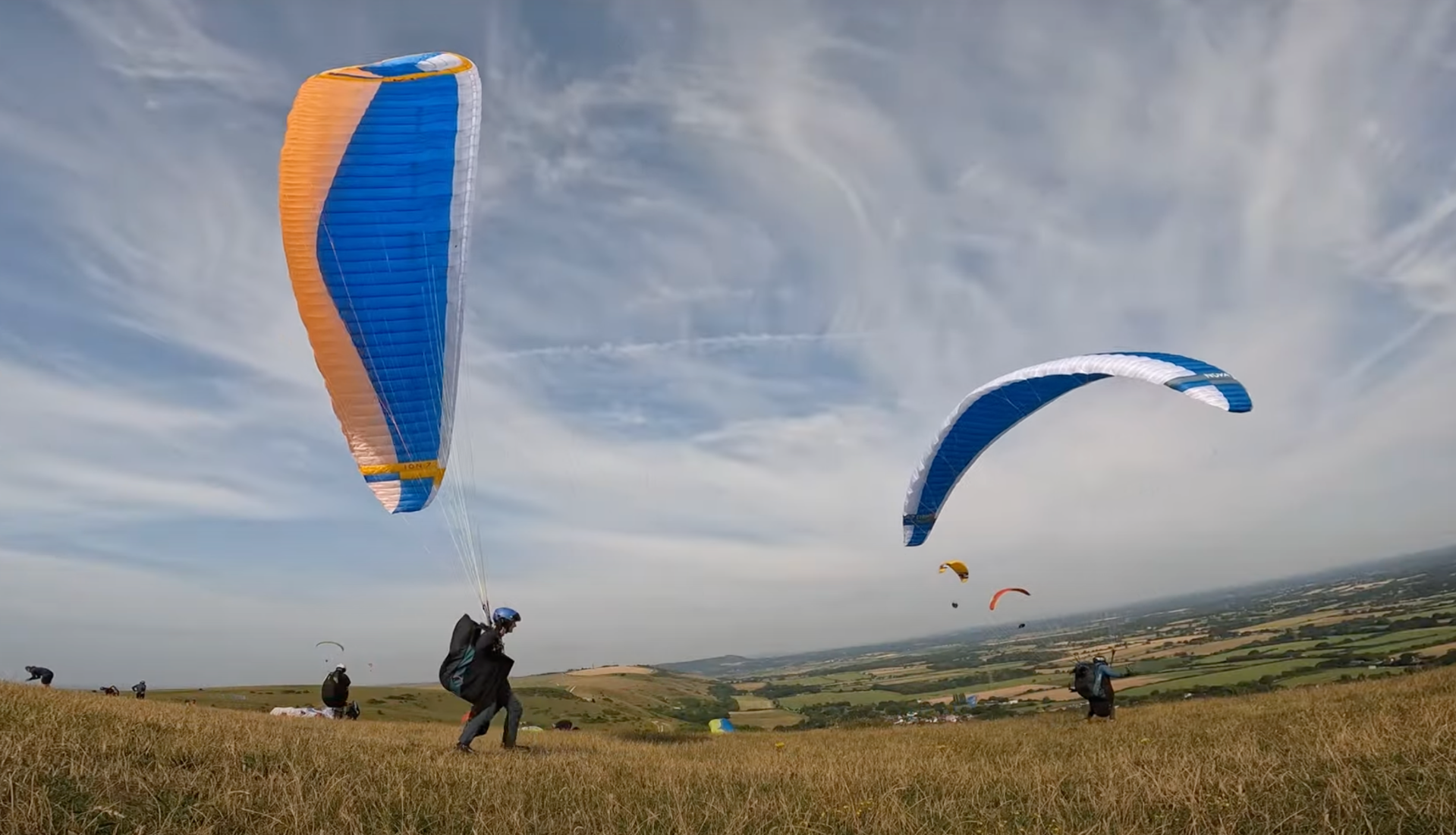
XC paragliders
Moving up to the XC class, paragliders in this category are designed for pilots aiming to cover longer distances and handle more dynamic conditions. These wings often feature longer lines, which improve their ability to accelerate during launch, aiding in light wind takeoffs and providing more power for ground handling in stronger winds.
XC wings tend to have a more refined design, with additional cells and narrower cell openings, which contribute to their increased performance. They typically have a less dampened profile, allowing for efficient climbs and better handling in turbulent thermals. While their limited aspect ratio and wing loading often make them capable of tight turns and excellent thermal climbing, they still balance performance with accessibility for pilots ready to step into cross-country flying. Check out the great range of XC paragliders we have to offer on our website.

Sports paragliders
Stepping up to the Sports class often means a reduction in wing area, resulting in higher wing loading and increased speed. This added speed generates more lift, helping the wing perform well in thermal climbs while excelling on glides, particularly when flying into the wind.
Sports wings typically feature streamlined designs, such as reduced line consumption—sometimes with only two main lines per side—and increased aspect ratios and cell counts. These wings are known for their excellent handling, making them ideal for dynamic maneuvers like wingovers and swooping. However, they demand more skill to control, as they can pitch, roll, and generate significantly more energy than the generally stable XC class wings, particularly in prolonged turbulence.
Check out the great range of Sports paragliders we have to offer on our website.
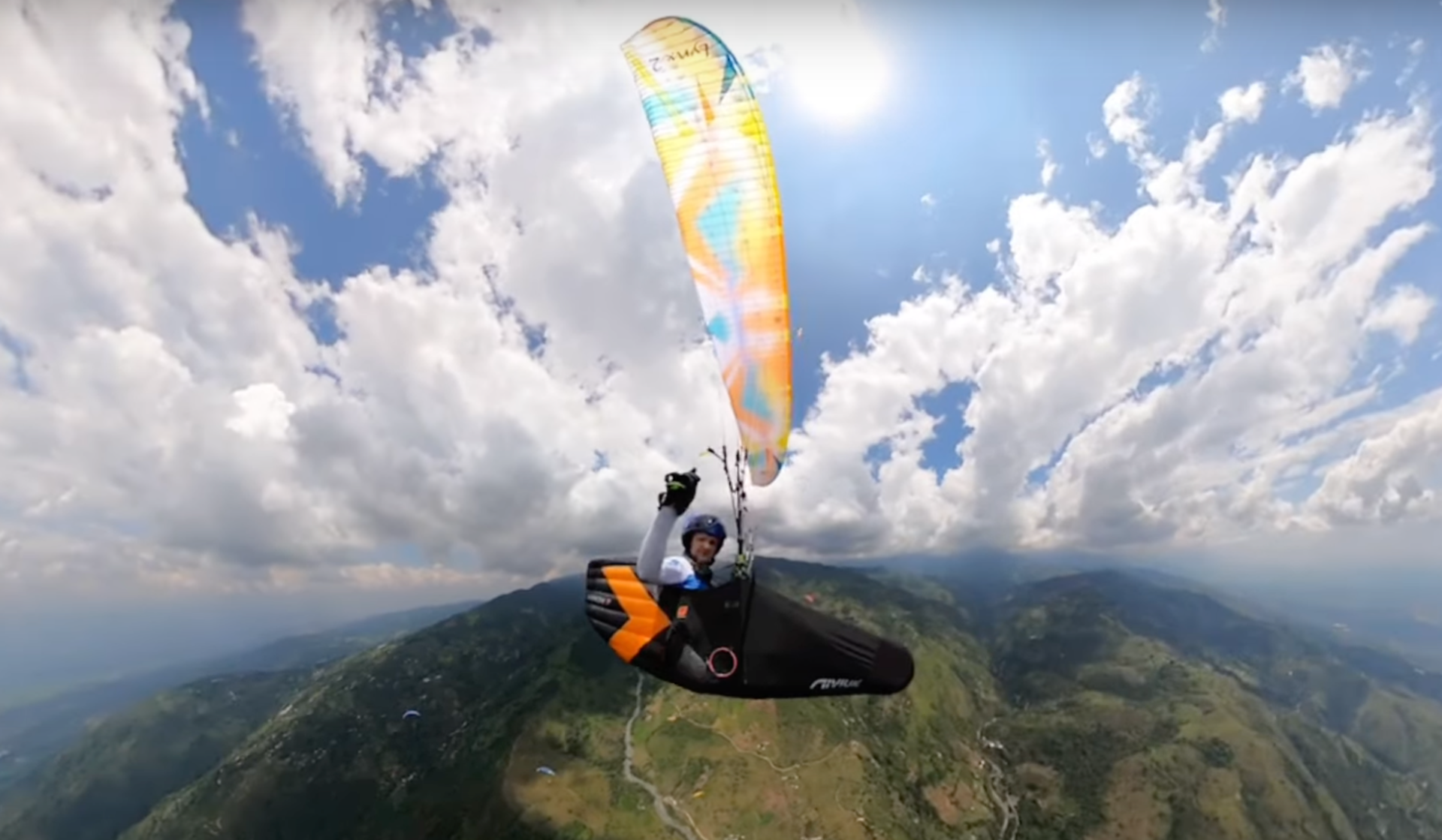
Advanced paragliders
Advanced wings often feature significantly reduced surface areas compared to beginner models, but with increased projected spans for better lift generation. This design, combined with narrower wingtips, helps minimize drag and improve aerodynamic performance.
However, these wings can be challenging to handle, particularly in tight thermal turns, where the tips may stall more readily. Pilots stepping into this class without a strong foundation in advanced skills, such as those learned in SIV courses, may struggle to maintain control in turbulent conditions. Advanced wings demand precise, delicate inputs and can easily enter a stall or spin if over-controlled. These wings are best suited for experienced pilots with significant airtime and the ability to manage their dynamic behavior. Check out the great range of Advanced paragliders we have to offer on our website.
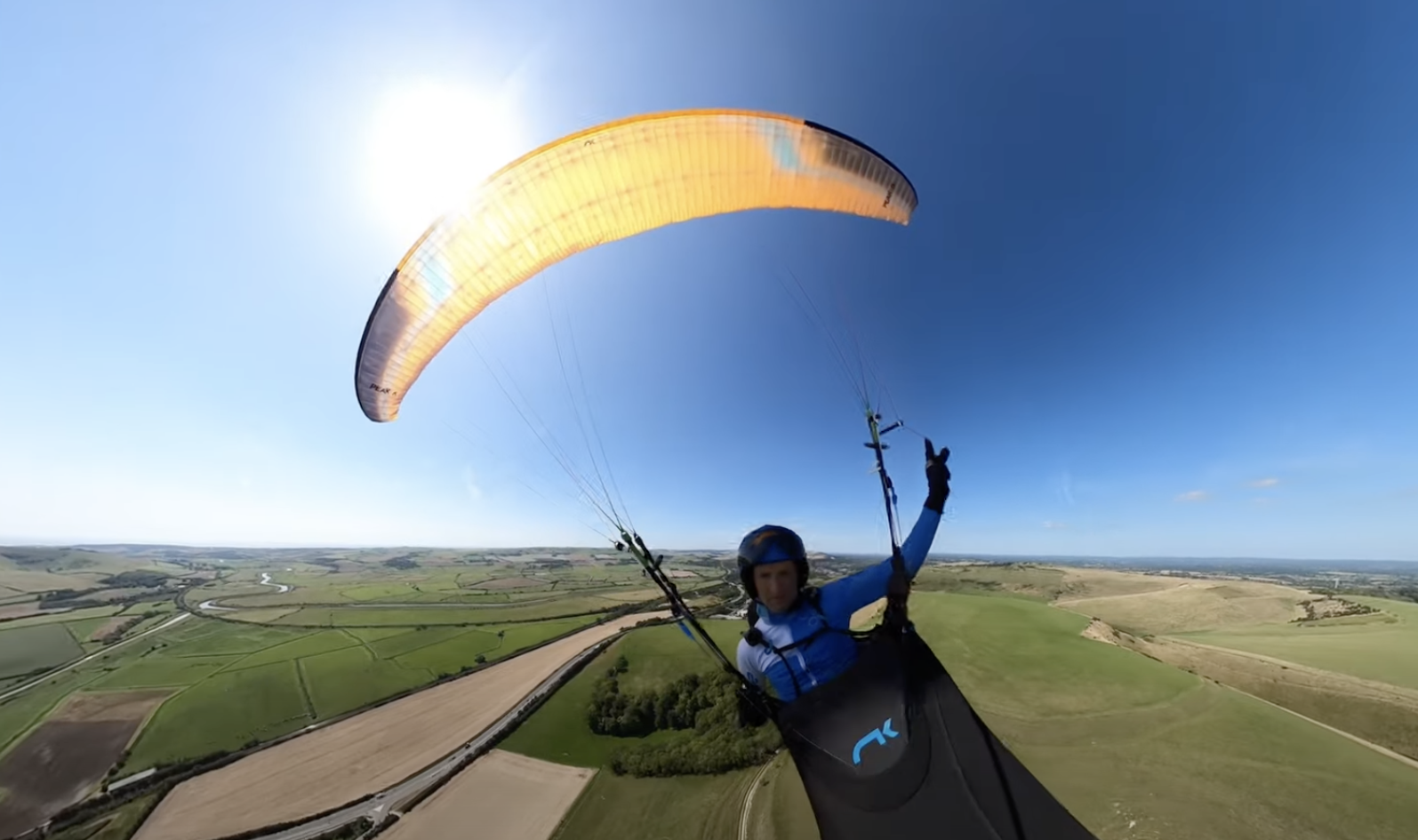
Paragliders in testing
Comparing a few specific aspects in testing: the risers; forward and reverse launching behaviour; ground handling (kiting) characteristics; and the stall point.
Risers
The risers are similar across all classes with 3 main riser sets: split As for big-ears; narrow black webbing, three-to-one speedbar gearing, mini-maillons, and unsheathed lines (except on the First and Progression wings).
Forward launching
In our comparative tests done the First wings popped up quickly and waited overhead. The Progression wing tracked straight. The XC wing went through a short stall phase where it rotated, before accelerating to slightly ahead of the pilot. It required a touch of brake to control. The Sports wing was less forgiving of a skew layout, it rotated and surged more, requiring more precise pilot reaction. The Advanced wing was unforgiving of mistakes and needed correct technique to yield a smooth launch.
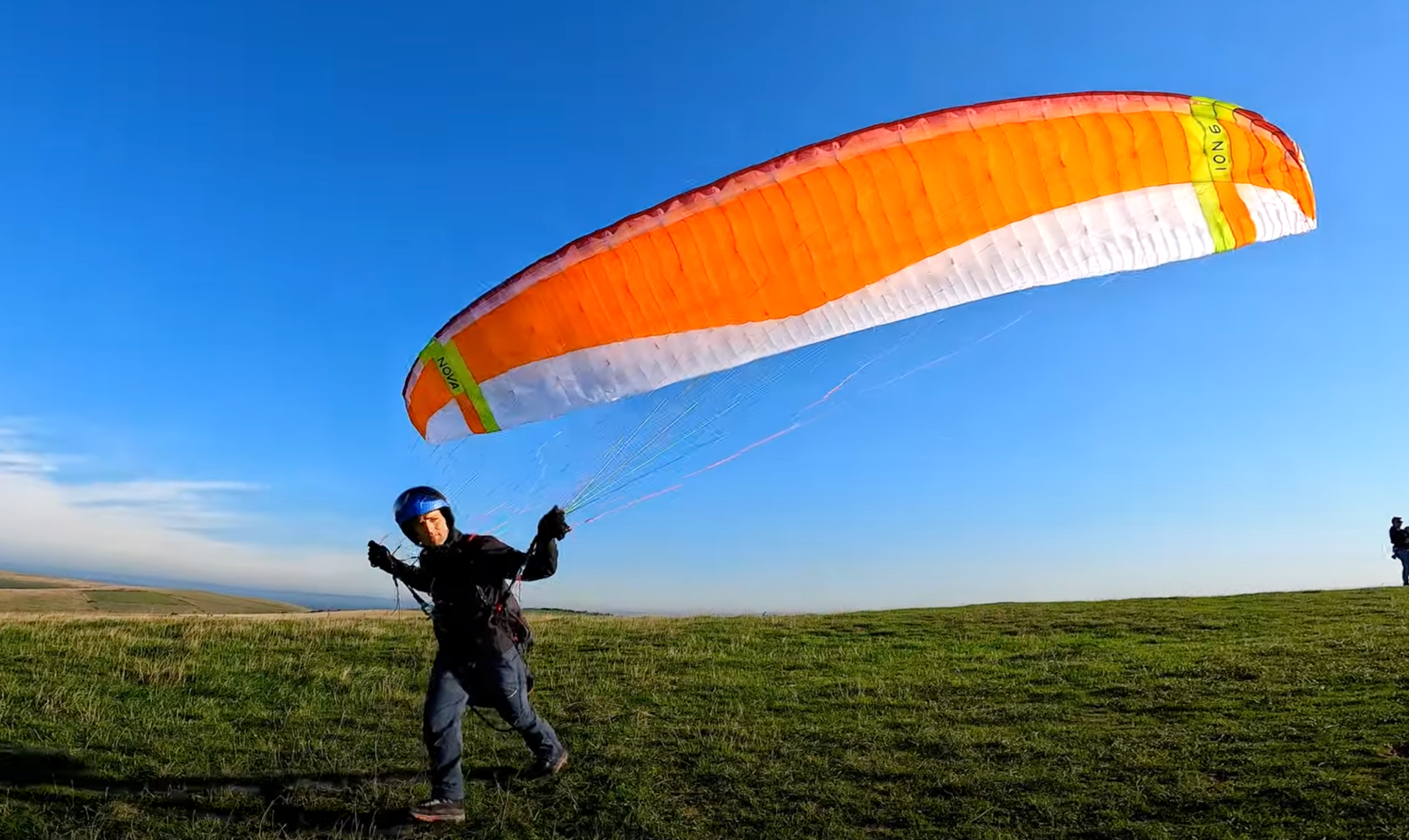
Reverse launching
FIrst wings with short lines and large cell openings, such as beginner or training models, are designed for straightforward handling. These wings inflate easily and come up smoothly without much energy, making them forgiving for pilots still mastering the basics.
Progression wings often retain some beginner-friendly features, like manageable cell openings, but may require more precision in setup and timing. A clean horseshoe-shaped layout becomes increasingly important, as their longer lines and smaller openings can result in more forceful inflation.
Sports wings demand a higher level of skill. These wings have smaller cell openings and increased line lengths, leading to faster airspeeds during inflation. As a result, pilots must actively move toward the wing during the pull-up to control acceleration and avoid over-pulling.
High-performance and advanced wings present the greatest challenge during reverse launches. Their sensitive profiles and narrow tips make them prone to skewing if the layout or timing is even slightly off. At high angles of attack (midway through inflation), the tips can stall easily, making corrections more difficult. Additionally, these wings tend to surge aggressively once inflated, requiring precise and well-timed inputs to keep them under control.
As the performance level of a wing increases, so does the need for refined technique and careful handling during reverse launches.
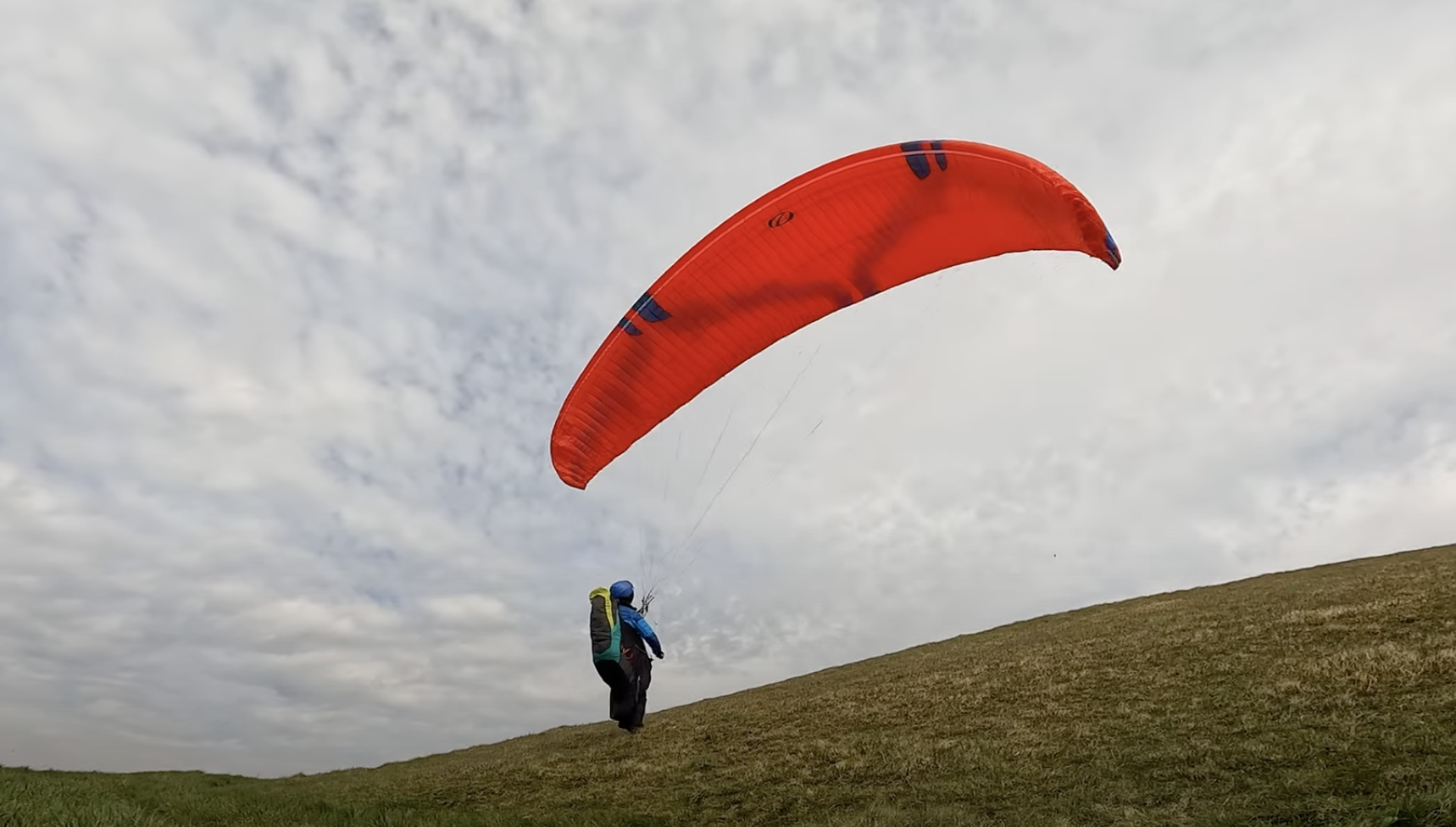
Ground handling (kiting)
The First wing responds quickly and keeps on flying. The Progression wing offered a quick 'pop-up' without the 'pluck' of the higher classes, and gave the impression of being effortless. The XC wing is resilient and allows precise positioning. The Sports wing is also easy but begins to yaw at the extremes. The narrow tips on the Advanced wing bend and stall easily, and got stuck a few times in the lines with small cravats. Matching the wing to your skills means you spend less time in the bushes and get more flying. The higher the class of wing, the more time needed to master the ground handling, so if your time is limited it's better to be on the Progression or XC wing.
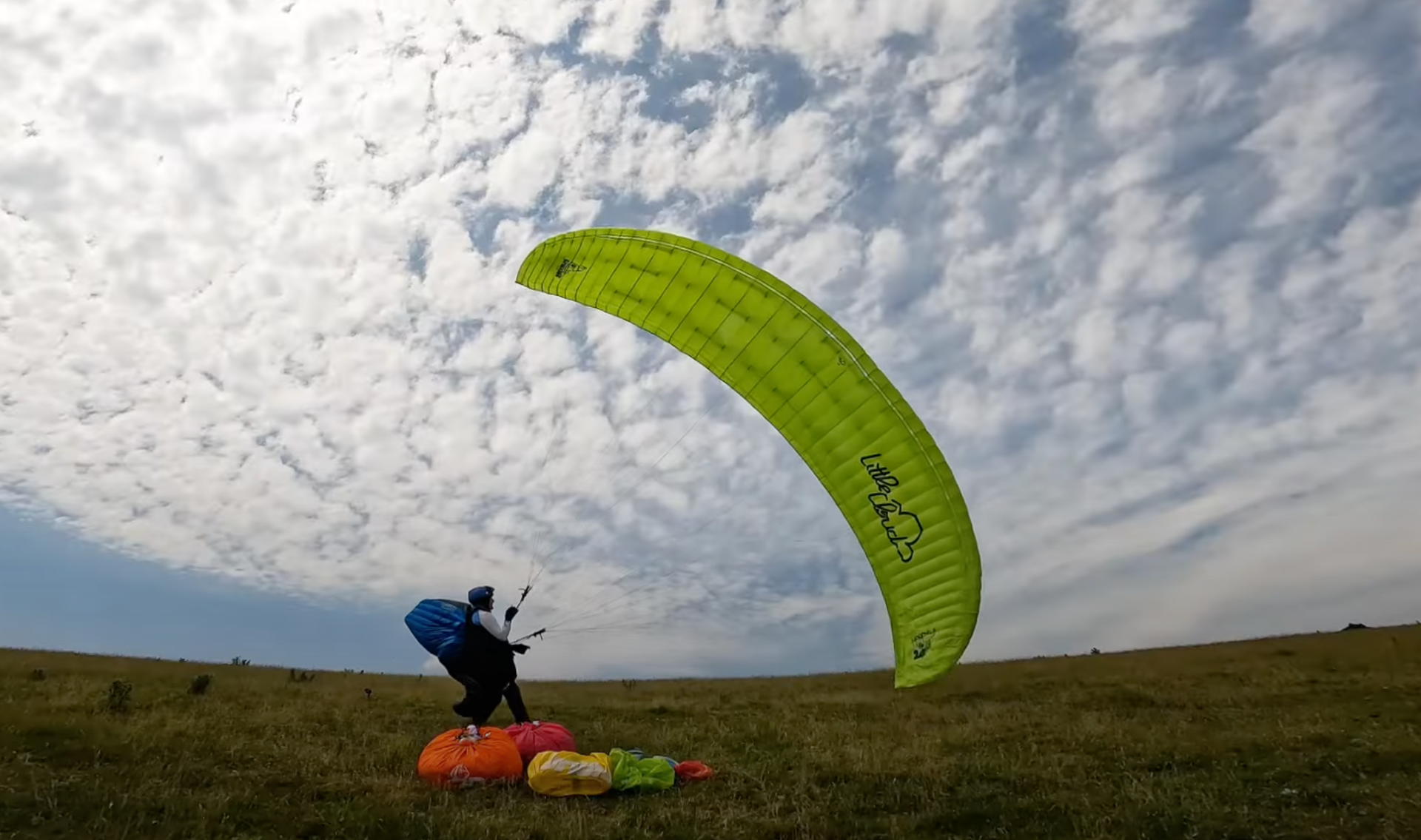
Stall point
To test this we flew a metre or two above the ground and held the brakes at seat board level. Although it's a lot of brake to fly with, it's probably similar to entering a sudden thermal on your normal landing approach, so it's a good way to analyse how forgiving the wing is.
First wings are the most forgiving. They tolerate a significant amount of brake input and maintain flight even at very slow speeds. Stalls, when they occur, are gradual and predictable, providing ample warning for the pilot to recover.
Progresssion wings typically require slightly less brake input to stall but remain predictable and manageable. Their brake pressure builds noticeably as the wing approaches the stall point, giving pilots clear feedback.
Sports wings introduce more complexity. While they often have a comfortable brake range in normal conditions, they can become less forgiving when flown slowly for extended periods. For instance, lingering in deep brakes on an sports or advanced wing may lead to a stall within a few seconds, especially in challenging conditions such as turbulent air or tight landing spots. These wings demand more precise brake management and quicker reactions to avoid unintended stalls.
Advanced wings in particular are less tolerant of slow speeds, with narrow margins for error. The stall can occur suddenly, and recovery requires skill and awareness. Pilots flying these wings must pay close attention when top-landing in lift or navigating tricky terrain, as the window for safe recovery is much smaller compared to lower-class wings.
Understanding the stall behavior of your wing is essential for safe flying, especially as you progress to higher-performance models where brake tolerance becomes less forgiving.
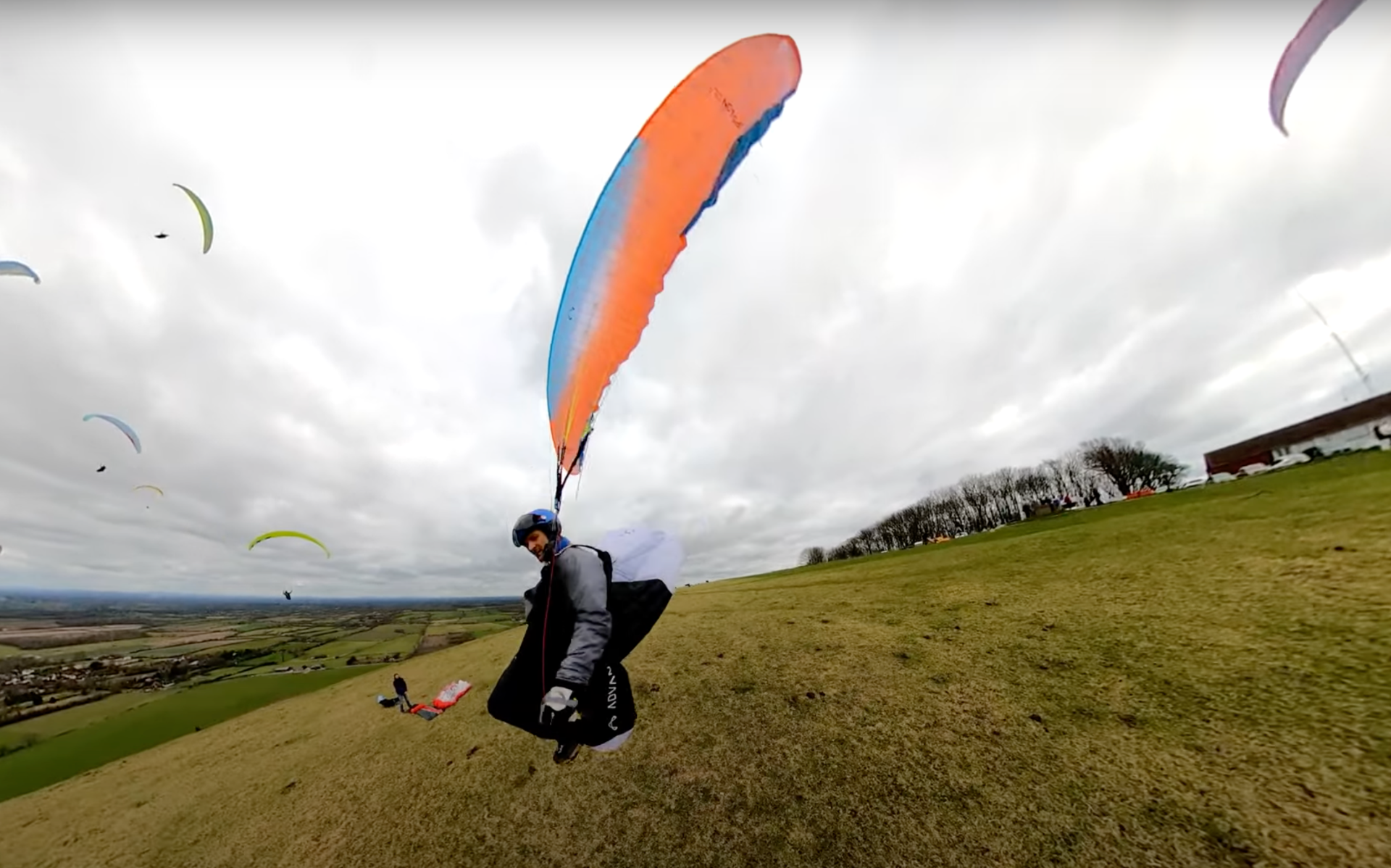
Matching wings to hours
The class of wing makes a big difference to your safety on launch. Sites are not always perfect, but you can make your launch more forgiving by choosing an easier wing. Although you can step onto the lower end of the Advanced class straight out of flying school, the XC class wings only become suitable once you have 50 hours of incident-free thermic airtime. (If you're only doing coastal ridge soaring, double the airtimes listed here). When progressing to the Sports class we'd recommend at least another 50 hours of thermic flying and some SIV experience. For a Advnanced wing another 100 incident-free thermic flying hours, a full SIV course and a minimum of 100 hours flying per year. Many pilots recognise the improved resale value of XC class wings, so never upgrade beyond that point. Unless you are flying into-wind tasks or competitions, there is little to gain by leaving the XC class.
Paragliders in the air
Although it's tempting to try and compare performance, it's pointless unless you're at matched wing loadings and in completely still air, with at least 1000m of altitude to waste. What's most important is that everyone in our comparison tests enjoyed their flying at the same site, and differences were so small we had to strain to see them. We could not show anything definitive on a video, although you can probably notice the First wing at the bottom/behind and the Advanced wing at the top/ahead of the stack.
In flight: First paraglider
The First class wing is the most secure wing, it just cruises along and doesn't disturb the pilot. It gives an easy turn without any residual energy to manage. For most pilots who just want to enjoy the scenery from aloft, the EN A does a fantastic job. It makes flying very simple.
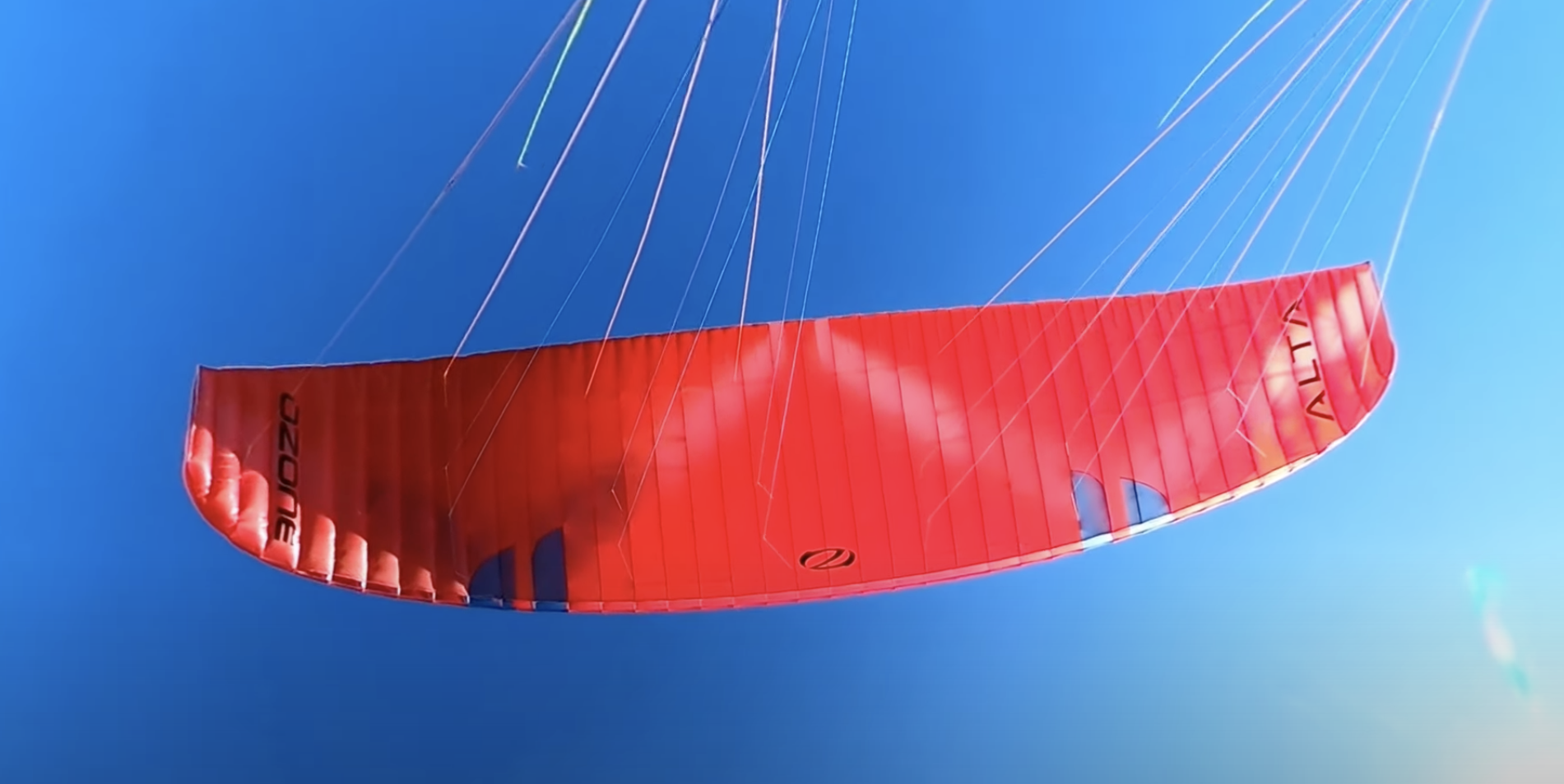
In flight: Progression paraglider
The Progression class wings are fun and responsive, offering a playful flight experience. They allow pilots to easily build energy through synchronized turns, adding excitement to the ride. During glides, they smooth out turbulence, turning sharp bumps into more manageable, rounded movements, making them a great choice for pilots looking to enhance their skills in a more forgiving and enjoyable way.
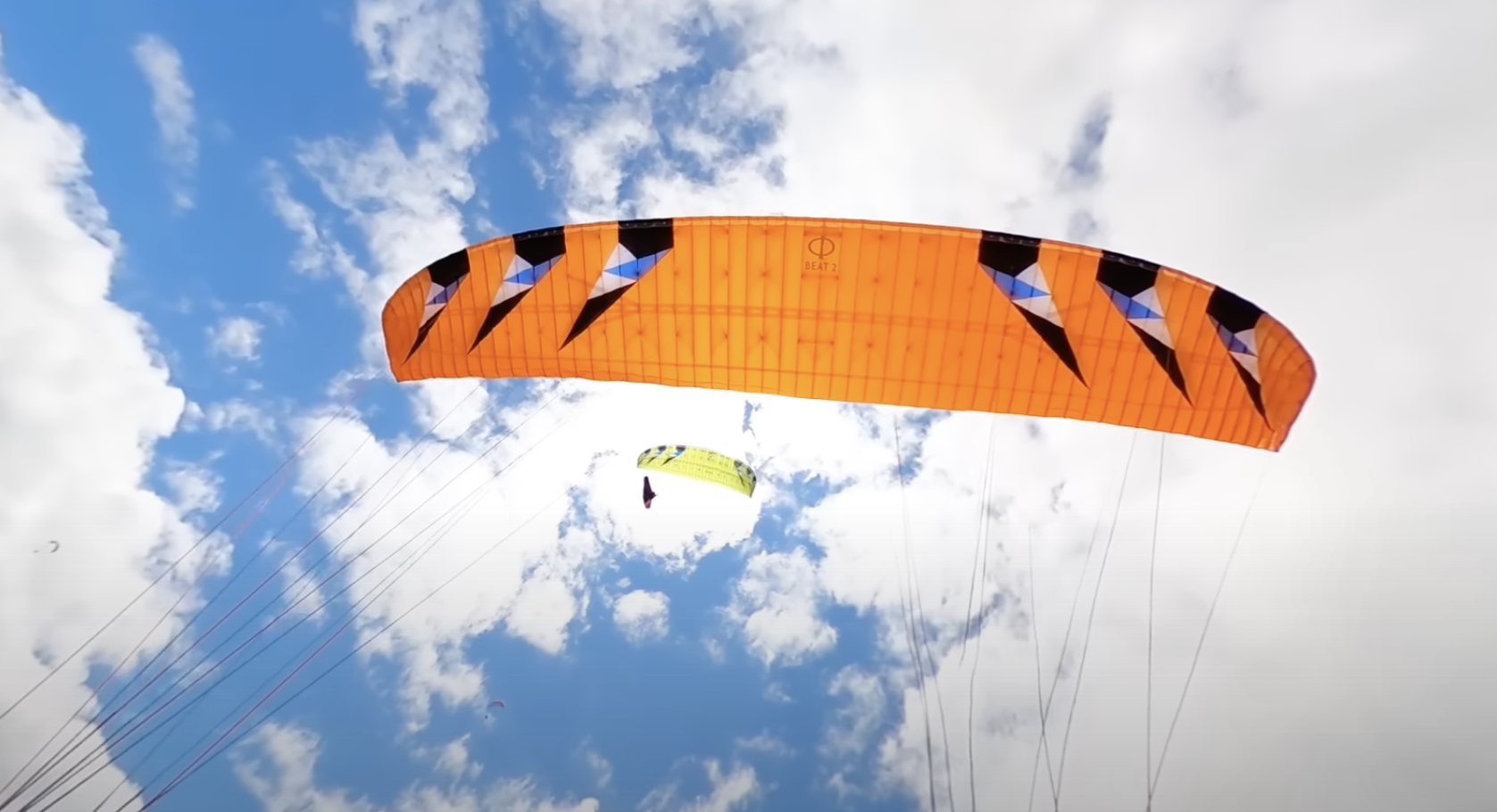
In flight: XC paraglider
The XC class wings are designed for more experienced pilots. They feature sleek, efficient aerofoils that are well-tensioned for optimal performance. However, these wings can experience surging when encountering updrafts, as they convert speed into height. With their responsive, crisp turns, they offer a more dynamic flying experience suited to those looking to push their skills further.
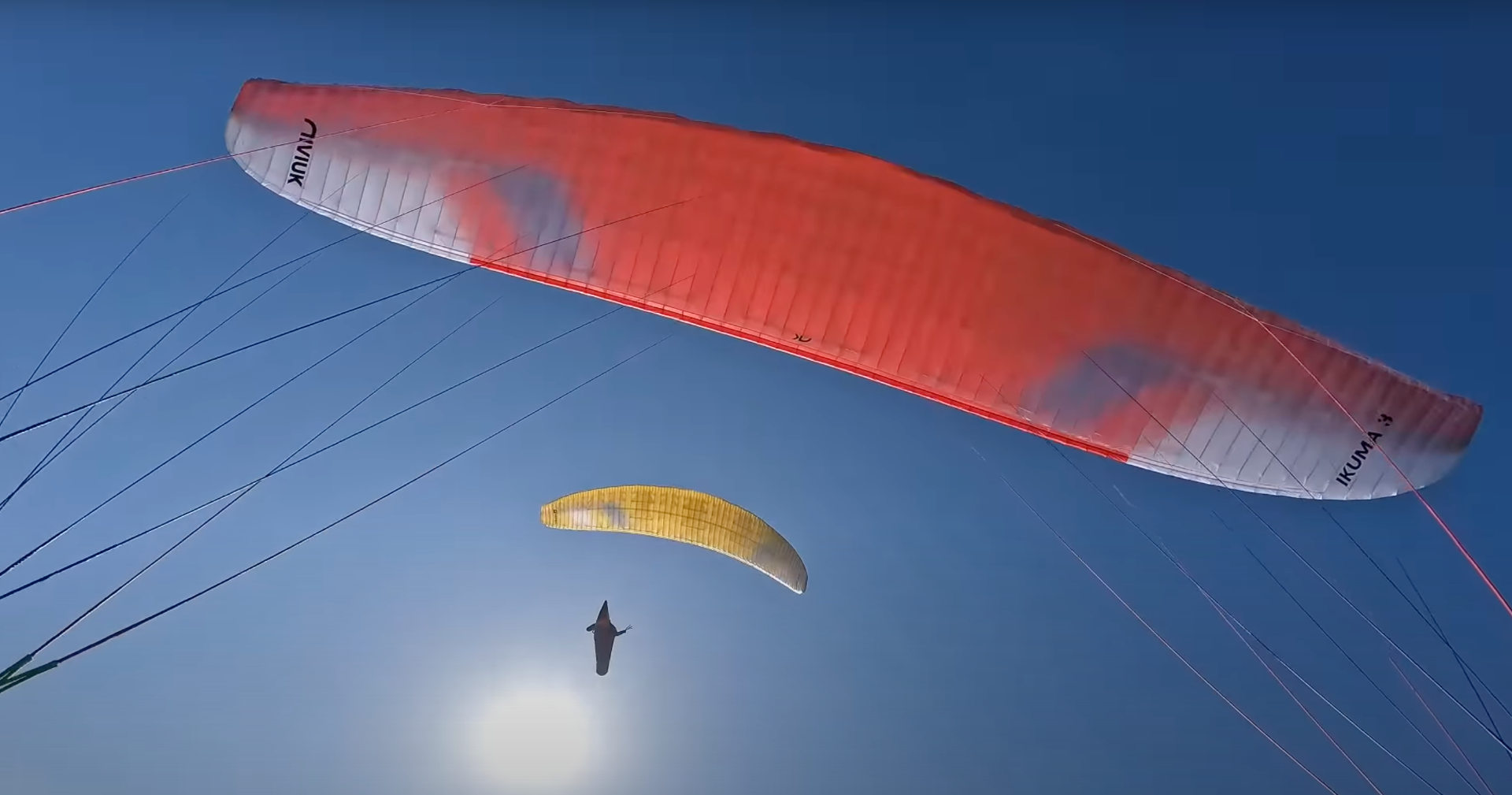
In flight: Sports paraglider
Sports class wings are designed for higher performance, with a wider turning arc due to their increased aspect ratio and speed. In light conditions, they remain efficient and climb well. These wings offer a balance of performance and forgiveness, making them suitable for a variety of flying styles. They are ideal for cross-country flights, where you can take advantage of thermals, long glides, and the smooth speedbar to maximize performance.

In flight: Advanced paraglider
Advanced class wings offer exceptional efficiency, with fluid, graceful flight. These wings excel in glide performance and convert small bumps into lift, providing excellent energy retention and precise handling. However, they require advanced skills and experience, as they can be challenging to control in turbulence and need a high level of control for maneuvers. For experienced pilots, these wings offer dynamic feedback and the ability to climb efficiently, making them well-suited for cross-country flights and thermaling. They reward skilled pilots with responsive handling and the freedom to perform more complex maneuvers.
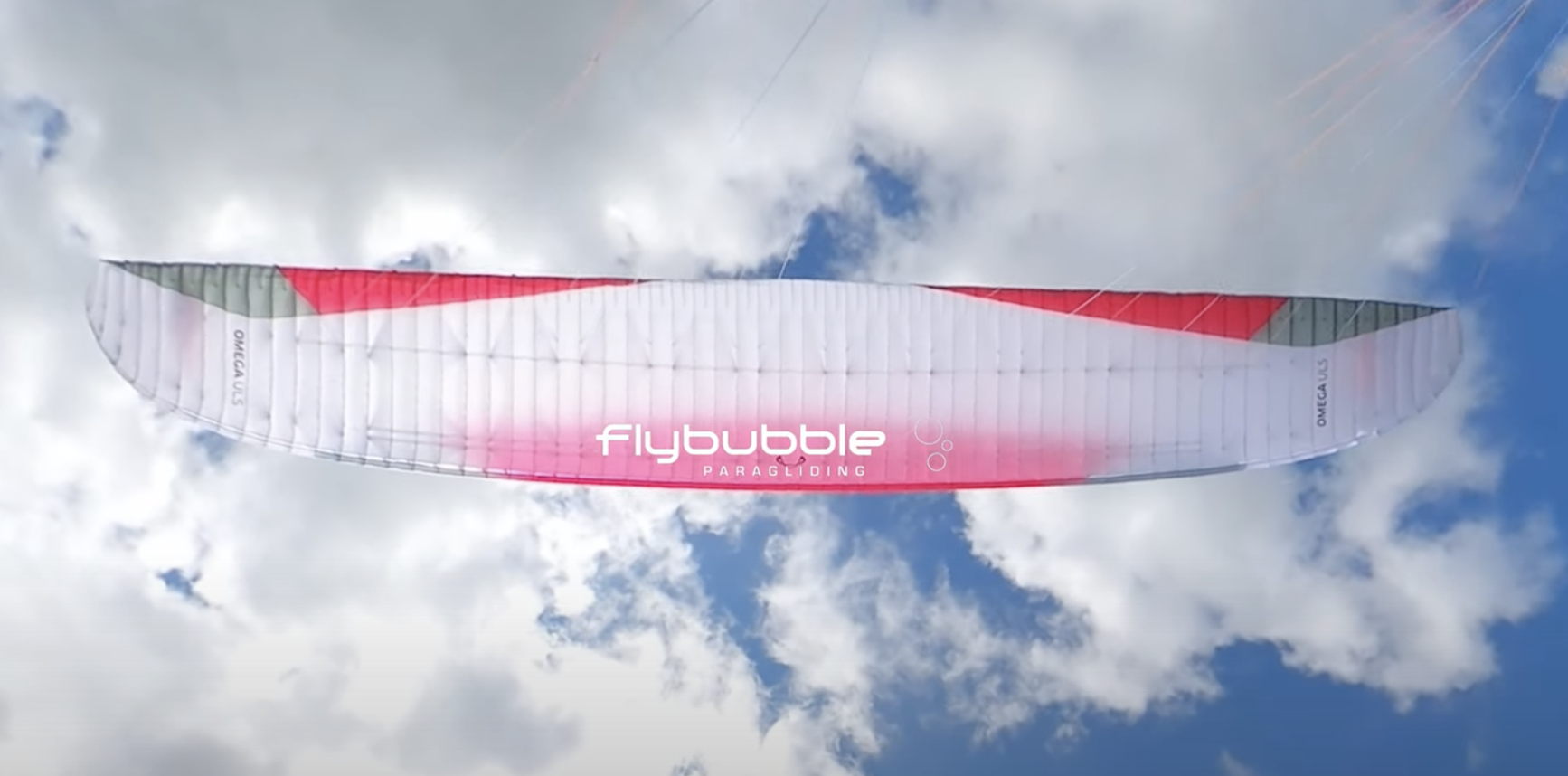
Big ears (descent technique)
First class wings typically have small ears when performing the big ears descent technique, offering a stable and forgiving flight. As you move up in class, the descent rate tends to increase, and the wings become more active, but they remain manageable with some skill. Sports wings tend to generate larger ears and may require more attention during the maneuver. With advanced wings, extra care is needed to manage the tips, but once settled, the descent can be very stable. As you progress through the classes, each step requires a bit more finesse and attention to detail.
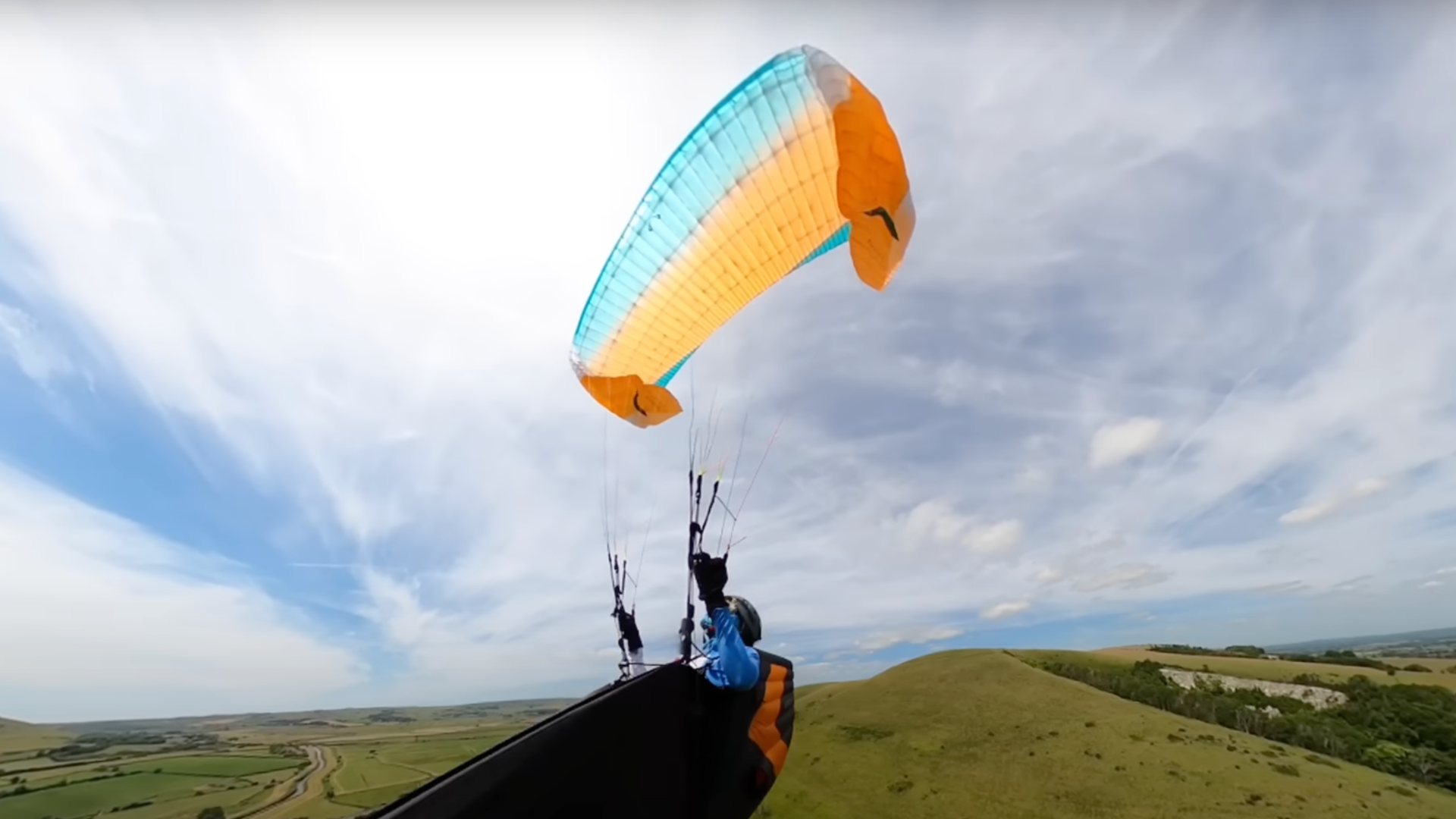
Conclusion
Whatever you are flying, be sure it's something you trust in all conditions, so you can spend as much time as possible in the sky with your friends.
We hope this article and accompanying video (see below) help you understand your choices. Match the wing to your skills.
If you need expert assistance when choosing your new wing we're always here to help.
Check out the great range of wonderful wings we have to offer on our website.
Video: How to Choose the Right Paraglider Part One: Which Class?
Brought to you by Flybubble
Like what we do? The best way to thank and support us is to buy gear from us and recommend us to others.
